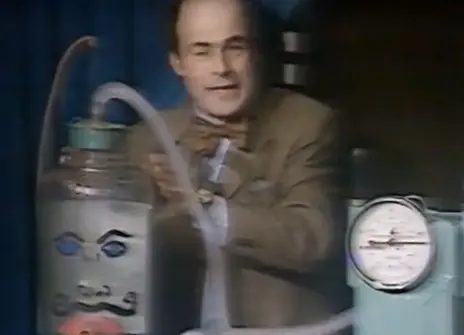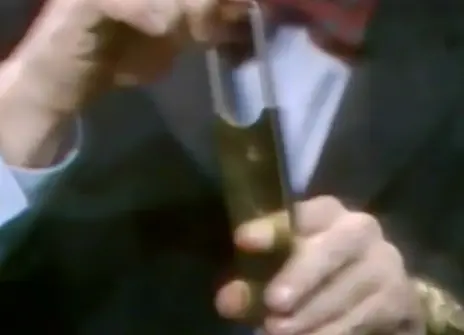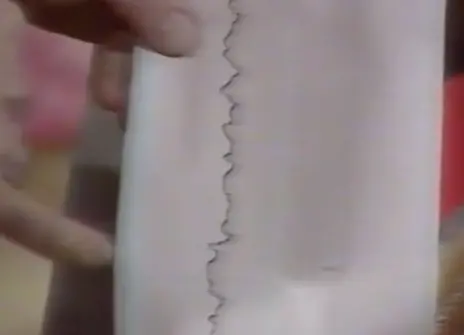Lecture 3 – Spikes and waves
From the 1975 programme notes:
It is one of the properties of muscle and nerve cells that their activity is accompanied by electrical events which can be detected outside the cells. An extreme manifestation of this effect is found in electric fish where special cells similar to muscle cells are connected in series like a multi-cell battery to produce external voltages sufficient to stun other fish.
This does not mean that muscles are in any sense electrically operated, or that nerves convey signals in the same way as copper wires, but only that chemical changes which take place at cell membranes when they are active also produce electrical signals. These sometimes may start further chemical changes in neighbouring cells thus stimulating them into activity or in the case of a nerve fibre will stimulate the next section of fibre thus causing the activity to travel along it.
Tissue in bulk is quite a good conductor of electricity because it consists mainly of salty water, and skin can be made reasonably conductive by appropriate treatment. In consequence, electrodes applied to the skin can pick up signals from tissues deep inside the body.
There are problems, however, just due to the fact that the whole of the inside of the body is conducting, because signals from many different sources can be mixed up with one another at the site of the electrodes. It is rather like fixing a microphone onto the outside wall of a large room in which there is a noisy party. Individual conversations, unless they happened to be very close to the microphone, would be impossible to distinguish, but you might be able to say that a lot of talking was going on.
he band which produces a large and organised signal would come through quite clearly, and if a number of the party-goers all started to do the same thing like shouting 'fire', or encouraging the teams in a tug-of-war, then their collective signal would become apparent. If one wants to investigate the electrical activity of the body one faces exactly the same problem.
An organ like the heart behaves rather like the band, and its signal can be detected almost anywhere on the body; with other tissues, like specific muscles, you try to attach the electrodes as close to the source of the signals as possible, whilst in the case of the brain you may most of the time have to be satisfied with something like the party noise. Nevertheless, the analysis of electrical signals available at the skin surface represents a major source of diagnostic information which can usually be obtained with very little trouble or discomfort.
About the 1975 CHRISTMAS LECTURES
In his 1975 CHRISTMAS LECTURES, Heinz Wolff explores how to investigate your inside without breaking the skin.
From the 1975 programme notes:
Imagine that you had to find out what was wrong with a motor car, but that you were not allowed to open the bonnet, or undo any nuts and bolts, or to break any wires. You would have to rely entirely on the noises you could hear, on how it reacted to the manipulation of external controls, and maybe on the characteristics of the exhaust.
The doctor using only his own senses is in much the same position when examining a patient, except that he has to deal with a very much more complicated system, and moreover one which is understood less completely than a motor car. This series of lectures is about how one can examine the functioning or the structure of the inside of the body noninvasively, that is, without having to open the patient. In particular, they will be concerned with the techniques which are now available to amplify the doctor's senses or to detect signals to which we are normally quite insensitive.
Each lecture will take a particular set of signals, consider their origin and why they are important, demonstrate how they are detected and measured, and explain how the instrumentation works. The lectures will also illustrate how much modern medicine is becoming dependent on a proper application and understanding of engineering and physical principles.






